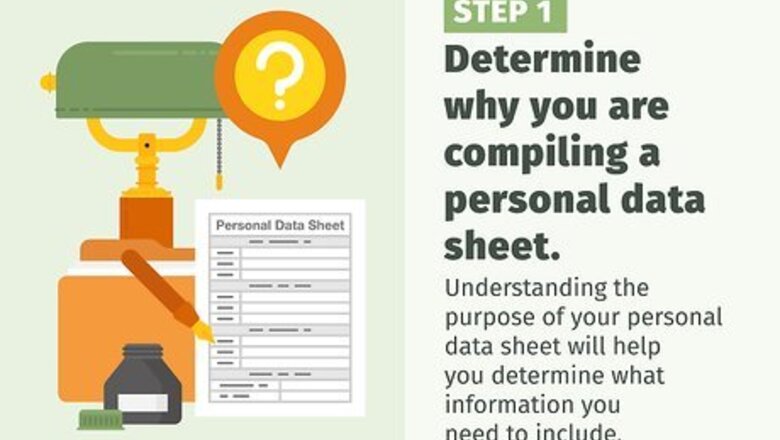
views
X
Expert Source
Amber LeimaResumé Consultant
Expert Interview. 18 March 2022.
Personal data sheets are especially useful tools if you are sight-impaired, as they provide a complete list of accurate information that a scribe can then use to fill in forms. Children's social service agencies and the military often use personal data sheets to expedite processing. Some universities and other organizations request personal data sheets as a component of admissions or scholarship applications. Compile a personal data sheet by including as much information about yourself as you feel comfortable giving.
Preparing to Write a Personal Data Sheet
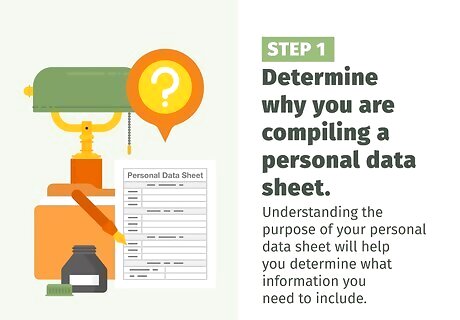
Determine why you are compiling a personal data sheet. Are you sight-impaired and intending to provide useful information for a scribe? Are you compiling a medical history for yourself or your child? Do you plan to use your personal data sheet as a foundation for job applications? Understanding the purpose of your personal data sheet will help you determine what information you need to include.
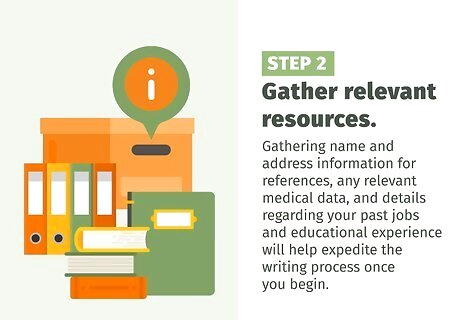
Gather relevant resources. Gathering name and address information for references, any relevant medical data, and details regarding your past jobs and educational experience will help expedite the writing process once you begin.
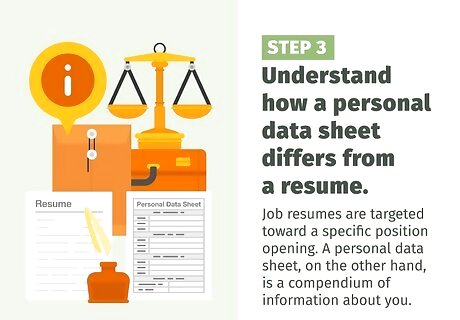
Understand how a personal data sheet differs from a resume. Job resumes are targeted toward a specific position opening. While you may use the same basic format for each job to which you apply, you'll adapt the objective, and possibly some of the supporting information, to the specific characteristics of each position. A personal data sheet, on the other hand, is a compendium of information about you. This document is not generated to "sell" your qualifications to a specific audience, but rather to provide complete, accurate, and clearly presented information about you and your life experiences. Note that while you may target your information to a broad type of audience -- medical professionals, potential volunteer opportunities, etc. -- the same personal data sheet should serve to introduce you to any audience of the targeted type. If you opt to include your personal data sheet with a job application you should always provide a resume, as well.
Including Useful Information
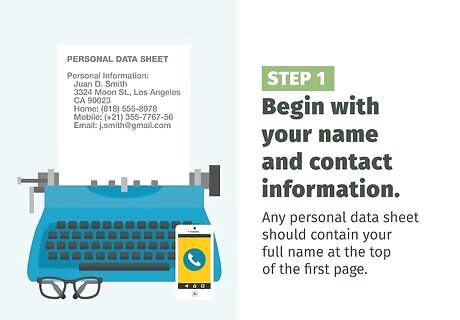
Begin with your name and contact information. Any personal data sheet should contain your full name at the top of the first page. If your personal data sheet is more than one page in length, include your last name in the header on subsequent pages. Add your current or local address, as well as a permanent address if it is different. Include all of your phone numbers, including home, work, and cell. Provide an email address, as well.
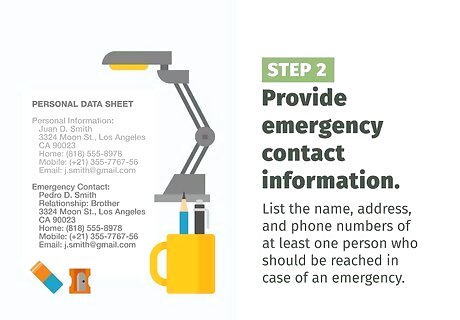
Provide emergency contact information. List the name, address, and phone numbers of at least one person who should be reached in case of an emergency. Be sure to keep this information accurate and updated at all times. This information may also be used if you cannot be reached for some reason.
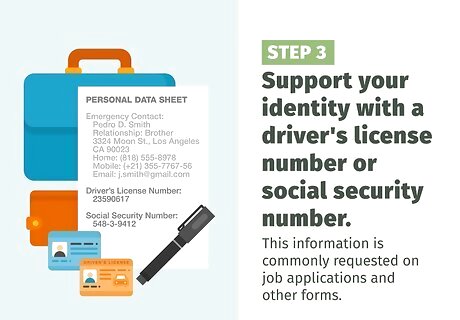
Support your identity with a driver's license number or social security number. People are often hesitant to give out sensitive and private information such as a social security number. However, the purpose of a personal data sheet is to gather all of your information into one place, and this information is commonly requested on job applications and other forms. Include the state in which your license is registered. If you do not have a driver's license, contact your local department of motor vehicles about obtaining a personal identification card. This card is an official form of identification just like a license, but does not grant driving privileges.
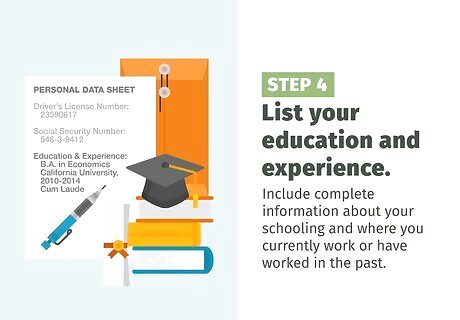
List your education and experience. Include complete information about your schooling and where you currently work or have worked in the past. List the names of past work supervisors. If you are still in school or recently graduated, put your education first. If you have been out of school for a while and you have a lot of work experience, list that information ahead of your educational credentials. List your most recent job first, then work backward through time. The same principle applies to listing your education -- start with the highest level of education you have completed and work backward. When in doubt, err on the side of extra information. Not all job applications, for example, may require a complete work history, but if you go ahead and provide one you'll be prepared for whatever you encounter if you or a scribe is making use of your personal data sheet to fill out forms.
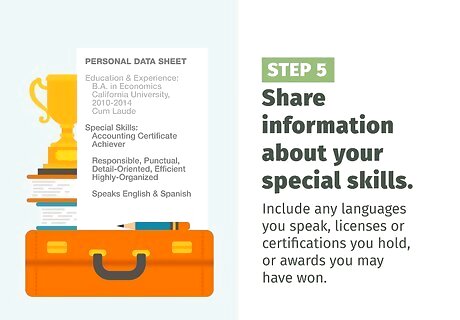
Share information about your special skills. Include any languages you speak, licenses or certifications you hold, or awards you may have won. You can also include memberships, publications, or community activities and volunteer work.
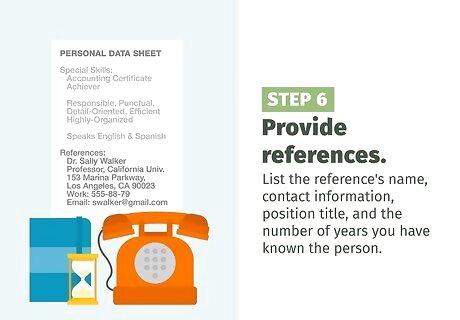
Provide references. Include at least three references from various jobs and schools. List the reference's name, contact information, position title, and the number of years you have known the person. (Always ask potential references if they are willing to serve in this capacity before you list them on your personal data sheet!)
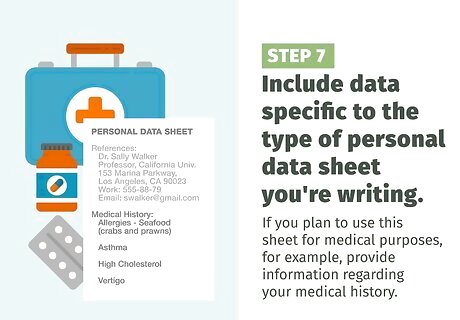
Include data specific to the type of personal data sheet you're writing. If you plan to use this sheet for medical purposes, for example, provide information regarding your medical history -- immunizations, past procedures, and a list of current medications.
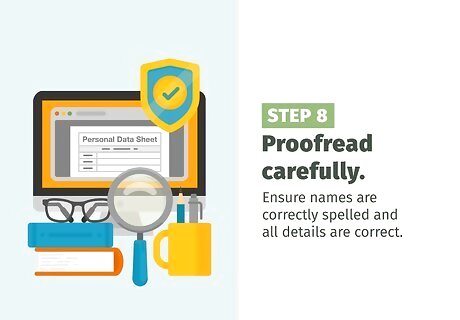
Proofread carefully. One of a personal data sheet's chief advantages is that it provides a compendium of useful, accurate information that you or a scribe can employ to fill out other forms. Ensure names are correctly spelled and all details are correct.
Making Use of Your Personal Data Sheet
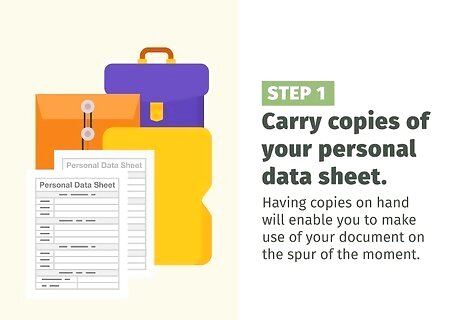
Carry copies of your personal data sheet. Having copies on hand will enable you to make use of your document on the spur of the moment. Use your personal data sheet as a foundation for completing job applications and other forms. If you are sight-impaired, being able to present your personal data sheet whenever it's needed will cut down on the confusion of making sure names are spelled correctly and important data is not transposed.
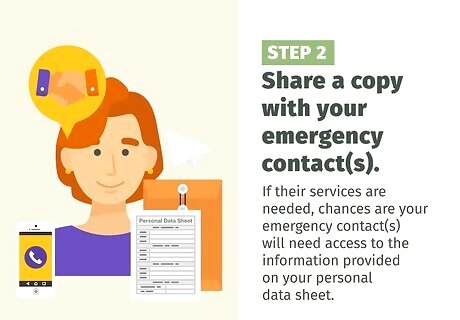
Share a copy with your emergency contact(s). If their services are needed, chances are your emergency contact(s) will need access to the information provided on your personal data sheet. Save time and worry in an emergency by ensuring they are prepared in advance.
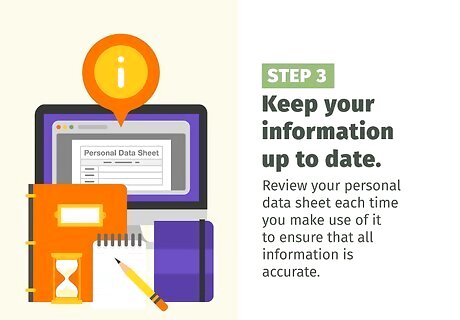
Keep your information up to date. Review your personal data sheet each time you make use of it to ensure that all information is accurate. Remember that your references may have moved, changed positions, or otherwise altered their contact information, so keeping your sheet up to date may require some regular research work.


















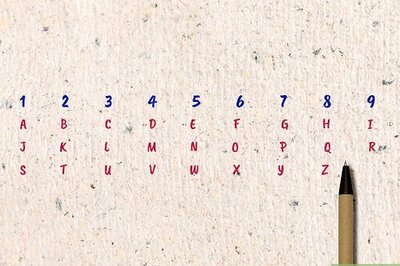
Comments
0 comment